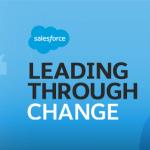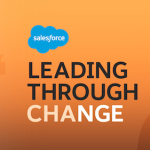A consumer comes walking into a store and approaches an associate right away, smiling and making direct eye contact.
They ask smart questions that show they’ve done their research.
They offer feedback on the products they are shown. and they make comments to a friend they brought in with them.
This may sound like something reserved for a physical, in-person experience, but the rise of connected consumers means this exact scene can play out online, through digital channels.
“Walking into the store,” just means they’ve arrived at your website and are browsing your product pages.
“Asking smart questions” could be inquiries they make via chatbot, email or social media.
The feedback they offer, meanwhile, could be what they share on a review site, on their social accounts or even as they text their family and friends.
Here’s the big challenge: as a business, you need to be just as intuitive and consistent in how you welcome and provide value to connected consumers as you’ve traditionally done offline.
Is your website ready to “greet” a connected consumer, for example, in the sense it’s easy to navigate? Are you available to take their questions and respond quickly? Are you aware of how they’re sharing their experience once they’ve made a purchase from you?
To be fair, there are lots of companies still catching up to the needs and expectations of connected consumers, in part because they didn’t emerge overnight.
It took time for technology to become more affordable and accessible for people across different demographics and geographies. Adoption of tools and digital channels happened steadily but not immediately. It was more like a wave sweeping across the sand than a light switch being turned on.
Today, though, connected consumers are quickly becoming the majority of almost any firm’s target market. Here’s how to spot them, and to ensure you build the right relationship with them:
What connected consumers want to see
Companies don’t want to turn any business away, so the old approach was to make marketing appeal “to the masses,” where the same message was aimed at everyone. The ability to collect, manage and make sense of customer data means connected consumers expect a more personalized experience.
They want to see an email newsletter that not only addresses them by name, but includes promotions that reflect their purchase histories. They want to get text notifications that let them know when a new item comes in that could complement something they’ve already bought, or when something they had expressed interest in goes on sale. They want proof the company remembers their preferences on everything from the sizes and colours of the products they buy to the way they pay for them.
What connected consumers want to hear
Let’s start with what they don’t want to hear: hold music, an agent who asks them to repeat information they’ve already given elsewhere, or any indication they have been forgotten by your business.
Companies that understand connected consumers are not only quick to respond, but give specific help based on what they know about them. These companies show they’ve been listening, whether it’s a survey that’s been filled out or feedback they’ve given on social media or a call.
Connected consumers don’t just want to hear from companies, though. They are in constant conversation with their peers to get advice on products, companies and prices. Successful businesses show they understand these discussions are happening, and improve how they operate accordingly.
How connected consumers want to move
A physical store or office used to be the hub around which everything in a company revolved. That’s no longer true of a company’s website.
Connected consumers want businesses to come to them, or at least make it easy to engage. Some will use your company’s mobile app. Some will tweet their requests or send a direct message on Twitter or Instagram. Others will send an email, a text or even sign in to a virtual consultation via videoconference.
Taking what’s called an “omnichannel” approach to marketing, sales and service used to be an opportunity for businesses. Now it’s an imperative. It’s worth it, though, because if you provide value at every touchpoint, you’ll reap the benefits of increased loyalty and revenue.
What connected customers want to feel
Technology has given customers so much power, but it also poses some risks and challenges that businesses need to keep in mind.
When connected customers hand over their data to a company, for instance, they want to feel a sense of trust that it will be handled securely, and that their privacy will be respected.
Using digital channels and tools should also be different when they’re acting as a consumer versus when they’re at work. Browsing and shopping online should feel fun, exciting, but also relaxing. The experience they have should feel memorable, and something they want to share with their family and friends.
Connected consumers also want to feel the brands they support have a sense of purpose. That could mean they are somehow active in their local community, or that they make contributions towards causes that reflect their own values. Perhaps most importantly, connected consumers want to feel — even if they don’t come out and articulate it quite this way — that they’re in a real relationship with a company.
A real relationship is one in which both parties actively participate, listen to each other and react in ways that are helpful. A real relationship is also not static but continues to evolve. In other words, connected consumers should feel the companies they do business with are in an ongoing process of learning more about them, and continuing to make the experience they offer better and better.
Serving connected consumers may sound more difficult, but the technologies required are available to even the smallest businesses. And when you use them effectively, your business becomes more predictable in the way it delivers value, more efficient in how it operates and much faster to grow.





















